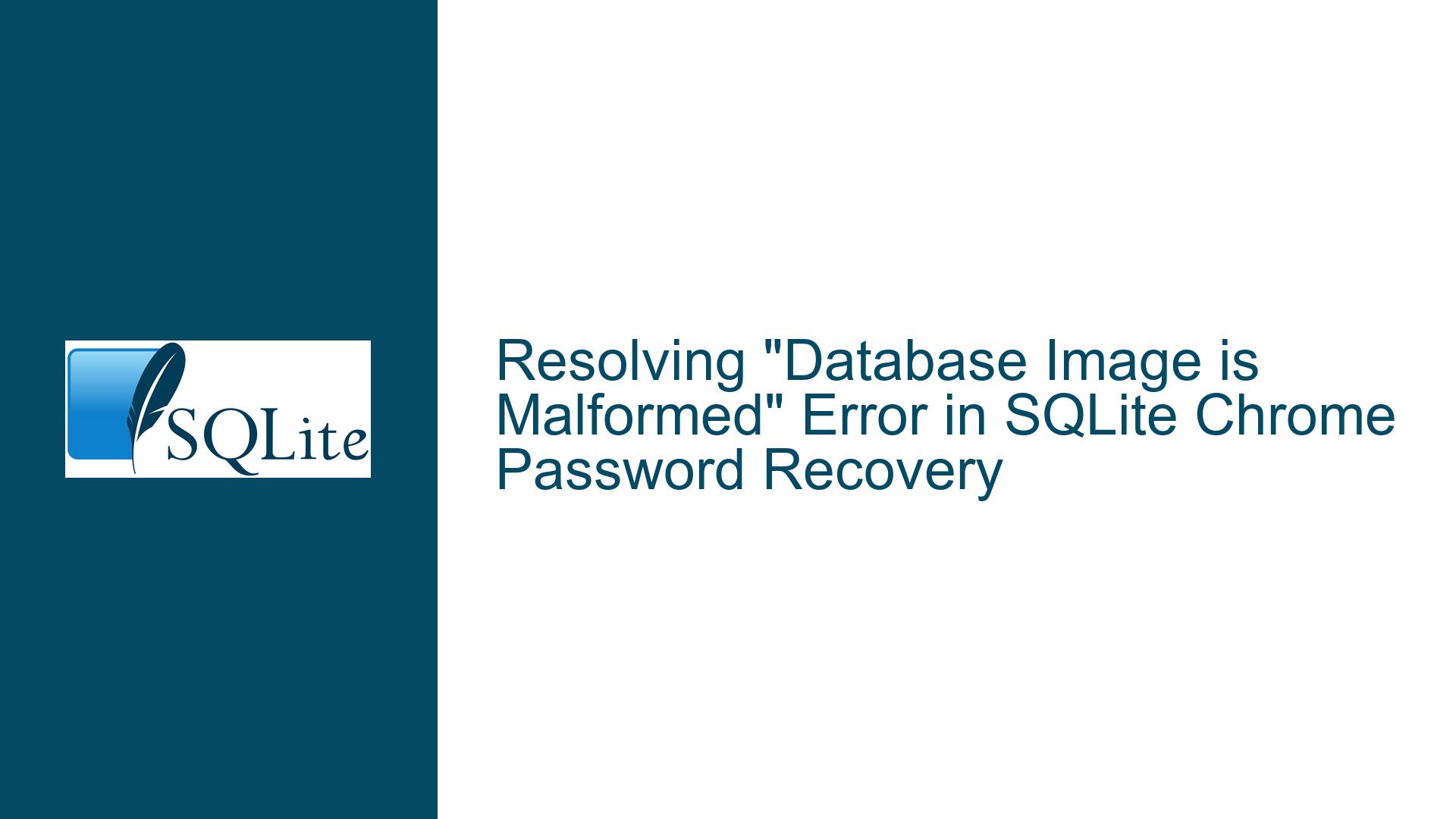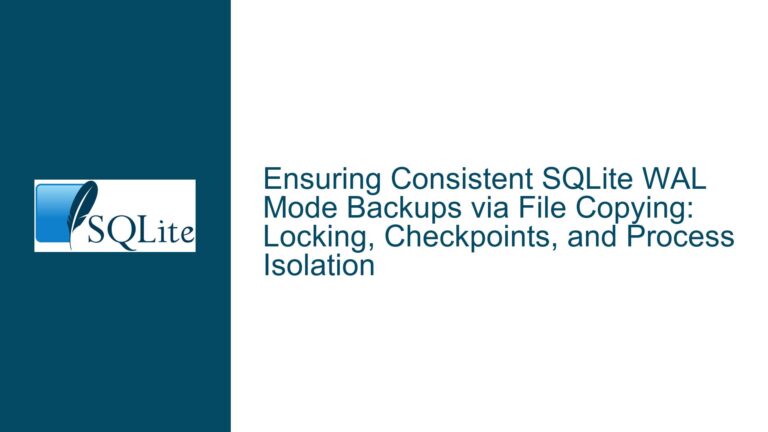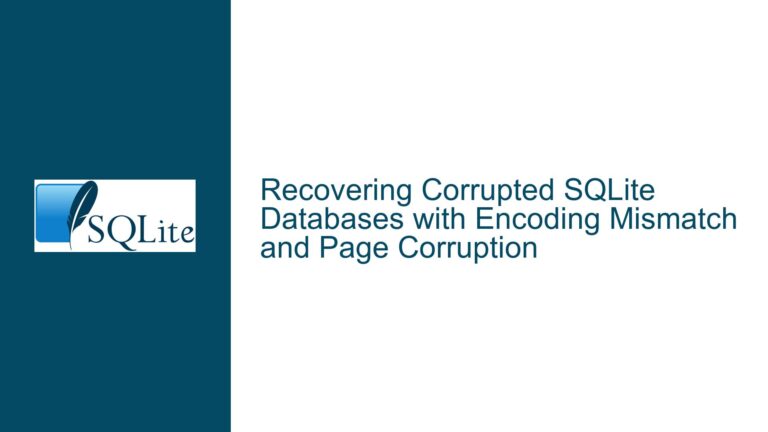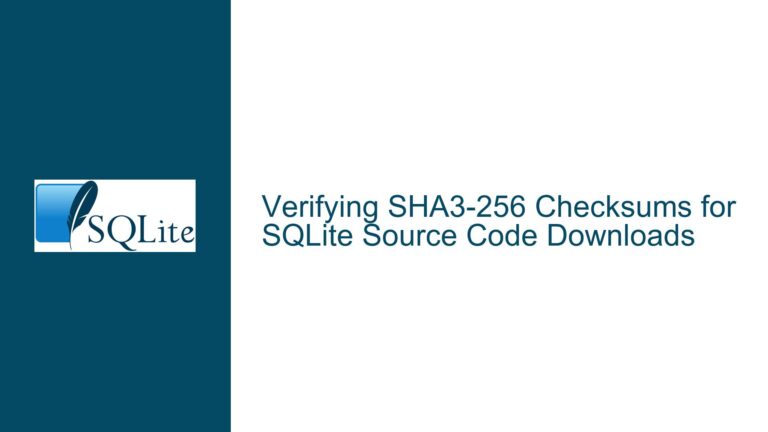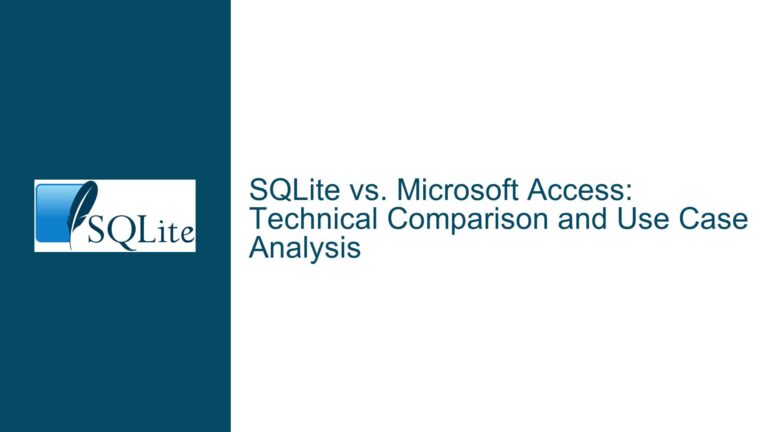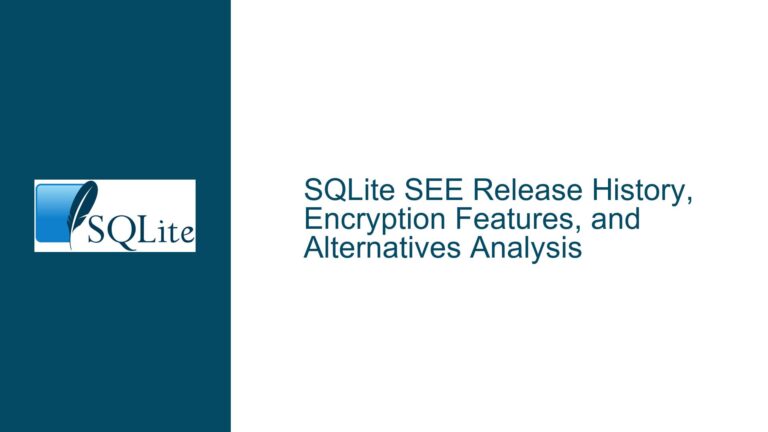Resolving “Database Image is Malformed” Error in SQLite Chrome Password Recovery
Diagnosing and Addressing a Corrupted Chrome Password Database
The "Database Image is Malformed" error in SQLite indicates structural damage to the database file, rendering it unreadable by standard tools like DB Browser. This issue becomes critical when attempting to recover sensitive data such as Google Chrome passwords stored in Login Data files. The problem often arises from incomplete backups (e.g., shadow copies), file system errors, or improper handling of SQLite operations. Below is a comprehensive guide to understanding the root causes, validating the integrity of the database, and executing recovery strategies.
Root Causes of Database Corruption in Chrome Password Recovery Scenarios
Database corruption in this context stems from multiple factors, often compounding to create an inaccessible file:
Partial Restoration from Shadow Copies
Windows Volume Shadow Copy Service (VSS) snapshots may capture database files mid-write, leading to inconsistent internal page structures. Chrome’sLogin Datafile is frequently updated as passwords are added or modified, increasing the risk of snapshot-induced corruption.File System or Storage Media Errors
Hardware failures, abrupt system shutdowns during backup creation, or sector-level disk errors can introduce invalid bytes into the database file. This disrupts SQLite’s ability to parse the header, schema, or b-tree structures.Encryption Overhead
Chrome encrypts sensitive fields (e.g., passwords) using Windows DPAPI (Data Protection API). While the SQLite container itself isn’t encrypted, malformed records with invalid encryption headers may confuse tools expecting properly structured blobs.User-Induced Errors During Recovery
Renaming files without extensions, misusing command-line tools, or editing binary databases in text editors (e.g., Notepad) can overwrite critical metadata. For example, attempting to "fix" the file by saving it in Notepad may convert UTF-8 BOMs or line endings, irreversibly damaging the binary format.SQLite Version Mismatches
Chrome may use a specific SQLite version with custom page sizing or extensions. Restoring a backup with an incompatible SQLite shell (e.g., oldersqlite3.exebuilds) can fail to parse newer features.
Systematic Recovery Workflow for Malformed SQLite Databases
Phase 1: Preliminary Validation and Safe Handling
Step 1: Verify Database Header Integrity
Use a hex editor (e.g., HxD, hexdump on Linux/WSL) to inspect the first 16 bytes of the file. A valid SQLite database begins with:
53 51 4C 69 74 65 20 66 6F 72 6D 61 74 20 33 00
(ASCII: "SQLite format 3\0")
If absent, the file is either not an SQLite database or has catastrophic header damage. In such cases, professional data recovery services are required.
Step 2: Create Multiple Backups
Copy the corrupted file to a safe location using read-only methods:
robocopy C:\Users\Teresa\Documents C:\Recovery *.db /ZB /R:3 /W:10
The /ZB flag in Robocopy ensures backup mode (bypassing some file locks), while /R and /W control retry attempts.
Step 3: Environment Preparation
- Install the latest SQLite shell from sqlite.org/download.
- Open Command Prompt as Administrator to avoid permission issues:
cd /d "C:\Program Files\SQLite"
Phase 2: Command-Line Recovery Techniques
Step 1: Basic Integrity Check
Attempt to open the database interactively:
sqlite3 "C:\Users\My Name\Documents\Login Data.db"
If the prompt immediately shows ...>, this indicates an incomplete prior command or severe corruption. Exit with .quit and proceed to automated recovery.
Step 2: Generate a SQL Dump
Redirect the output of .dump to reconstruct the schema and data:
sqlite3 "corrupt.db" .dump > dump.sql
If this fails with malformed database schema, use .recover:
sqlite3 "corrupt.db" ".recover" | sqlite3 "recovered.db"
Step 3: Handle Spaces and Special Characters
Windows command-line parsing often mishandles spaces in paths. Use triple quotes for complex paths:
sqlite3 """C:\Users\My Name\Documents\Login Data.db""" ".recover" > recovered.sql
Step 4: Rebuild the Database
Pipe the recovered SQL into a new database:
sqlite3 "recovered.db" < recovered.sql
Validate the new file with:
sqlite3 "recovered.db" "PRAGMA integrity_check;"
Phase 3: Chrome-Specific Considerations
Step 1: Account for Encryption
Chrome’s Login Data uses DPAPI encryption tied to the original Windows user profile. Even a perfectly recovered SQLite file may show garbled passwords if moved to another machine. To decrypt:
- Ensure the recovered file is in the same user profile as the original.
- Use Chrome’s internal password manager (chrome://settings/passwords) or third-party tools like
DB Browser for SQLitewith DPAPI integration.
Step 2: Manual CSV Export
After recovery, extract passwords to CSV using SQL queries:
sqlite3 -header -csv "recovered.db" "SELECT origin_url, username_value, password_value FROM logins;" > passwords.csv
Note: password_value remains encrypted; use PowerShell to decrypt via CryptUnprotectData:
Add-Type -AssemblyName System.Security
$bytes = [System.IO.File]::ReadAllBytes("C:\path\to\encrypted_field")
$decrypted = [System.Security.Cryptography.ProtectedData]::Unprotect($bytes, $null, 'CurrentUser')
[System.Text.Encoding]::UTF8.GetString($decrypted)
Step 3: Sync with Google Account
If local recovery fails, force Chrome to resync passwords:
- Navigate to
chrome://flags/#password-import-exportand enable the feature. - Visit
chrome://settings/passwordsand use "Export passwords". - Sign out and back into Google Chrome to trigger cloud synchronization.
Phase 4: Advanced Recovery Options
Option 1: Use sqlite3_recover Tool
The commercial sqlite3_recover tool from SQLite.org offers deeper corruption scanning:
sqlite3_recover -v "C:\corrupt.db" > recovered.sql
Option 2: Forensic Tools
Tools like Sleuth Kit (autopsy) or PhotoRec can extract database fragments from damaged storage media. Combine this with grep-based searches for logins table structures.
Option 3: Professional Services
If all else fails, engage data recovery specialists with SQLite expertise. Provide them with:
- Exact Chrome version and OS build.
- SQLite shell output logs.
- Any remaining error messages.
Final Notes
Database recovery requires patience and methodical iteration. Always document each step’s output to identify patterns in corruption. For Chrome-specific issues, prioritize syncing with Google’s cloud infrastructure before attempting low-level file repairs. If encryption barriers persist, consider scripting DPAPI decryption using Python’s pywin32 or similar libraries to automate password extraction from recovered blobs.
